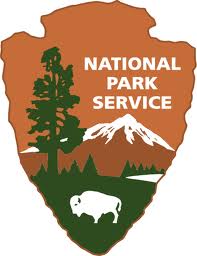 Buildings may not be the first thing brought to mind when thinking about the National Park Service (NPS). From Maine’s Acadia National Park to Volcanoes National Park in Hawaii, NPS protects approximately 84.4 million acres of wild, scenic, culturally and historically important lands and properties throughout the U.S. NPS is an agency of the Department of the Interior with the mission of “preserving unimpaired the natural and cultural resources and values of the National Park System for the enjoyment, education, and inspiration of this and future generations.” More than 20,000 full and part time NPS employees serve around the country and in the agency’s headquarters: the historic and vast Stuart Lee Udall Department of Interior Building in N.W., Washington, D. C.
Buildings may not be the first thing brought to mind when thinking about the National Park Service (NPS). From Maine’s Acadia National Park to Volcanoes National Park in Hawaii, NPS protects approximately 84.4 million acres of wild, scenic, culturally and historically important lands and properties throughout the U.S. NPS is an agency of the Department of the Interior with the mission of “preserving unimpaired the natural and cultural resources and values of the National Park System for the enjoyment, education, and inspiration of this and future generations.” More than 20,000 full and part time NPS employees serve around the country and in the agency’s headquarters: the historic and vast Stuart Lee Udall Department of Interior Building in N.W., Washington, D. C.
National parks predate the agency that oversees them by 44 years. In 1872, Yellowstone was designated as the first national park, guarded by the U.S. Army and promoted by railroad companies as a tourist destination. Protecting beautiful landscapes from ranching, logging and other commercial exploitation also motivated the federal takeover of Yosemite State Park in California, and the Antiquities Act of 1906 broadened efforts to include lands with cultural and scientific interest. Under the Antiquities Act, Theodore Roosevelt created National Monuments to protect geological wonders such as Devil’s Tower, cliff dwellings at Montezuma Castle, and the petroglyphs, Indian ruins, and petrified wood at Petrified Forest, Arizona. But Roosevelt’s advisor and head of the U.S. Forest Service, Gifford Pinchot, advocated for the Forest Service to control national parks–and their timber, grass and water resources. The Sierra Club and others, alarmed that the Forest Service’s utilitarian focus would lead to neglect of natural and historic values in federal parks, fought for the creation of a separate agency. On August 25, 1916, the preservationist arguments prevailed when Woodrow Wilson signed the National Park Service Organic Act and created the National Park Service. Largely crafted by noted landscape architect and city planner Frederick Law Olmsted, Jr., the Organic Act clearly states the purpose of NPS: “to conserve the scenery and the natural and historic objects and the wild life therein and to provide for the enjoyment of the same in such manner and by such means as will leave them unimpaired for the enjoyment of future generations.”
The national park concept, sometimes called “America’s best idea,” was expanded further in 1933, when Franklin Roosevelt reorganized NPS responsibilities to include national parks (e.g., Grand Canyon), national monuments (e.g., Escalante/Grand Staircase), national military parks (e.g., Gettysburg), national cemeteries (e.g., Arlington), national memorials (e.g., Washington Monument) and the National Capital Parks in D.C. Four more types of parks were created in 1936—national parkways, national recreation areas, national seashores, and recreational demonstration areas. Subsequent presidents also added significant areas to the park system, notably Jimmy Carter who set aside 47 million acres in Alaska. Pinnacles National Park is the newest unit, created to promote tourism and protect biodiversity in central California by President Obama in January 2014.
NPS also administers the National Register of Historic Places (NRHP), the federal government’s record of buildings, structures, sites and districts deemed worthy of protection. The National Historic Preservation Act of 1966 established the NRHP, which currently maintains a list of more than 88,000 properties. Listing does not convey legal federal protection but may lead to state or local protection. Federal tax benefits may be available to owners of listed properties, such as a 20% investment tax credit for rehabilitation. Several federal buildings on the NRHP have been highlighted here for innovative green renovations, including the Wayne N. Aspinall Federal Building and U.S. Courthouse, the Hipolito F. Garcia Federal Building and 50 United Nations Plaza, winner of this spring’s Federal Building Challenge.
In 2016, NPS will celebrate its 100th anniversary. In its FY 2015 budget justification, the Service recognizes that its responsibilities have transformed over the years, from protecting a relatively few wild acres 100 years ago to today’s stewardship responsibilities stretching “into urban centers, across rural landscapes, deep within oceans, and across night skies.” The report also notes that the diverse park system has economic as well as aesthetic value, returning $10 to the US economy for every dollar invested. The FY 2015 discretionary budget request of $2.6 billion exceeds the 2014 enacted level by $55.1 million and would include funding for several Centennial-related efforts. About $30 million for operations would help prepare for and manage the expected influx of park visitors, $16 million would improve the condition of historic structures, visitor centers and trails and $6 million would support youth employment and volunteer opportunities. Funding is also being sought through the President’s proposed Opportunity, Growth and Security Initiative to support scientific research into park management practices and to fund assessments of park vulnerabilities to climate change. Restoring park assets, improving park employment opportunities and connecting more people with the outdoors are viewed as essential to prepare the system for its second century. According to the NPS report, “This 21st century effort will create thousands of jobs for youth, veterans, and others on projects to upgrade and restore national parks, providing more than 10,000 work and training opportunities for young people and engaging more than 265,000 volunteers in support of public lands.”
